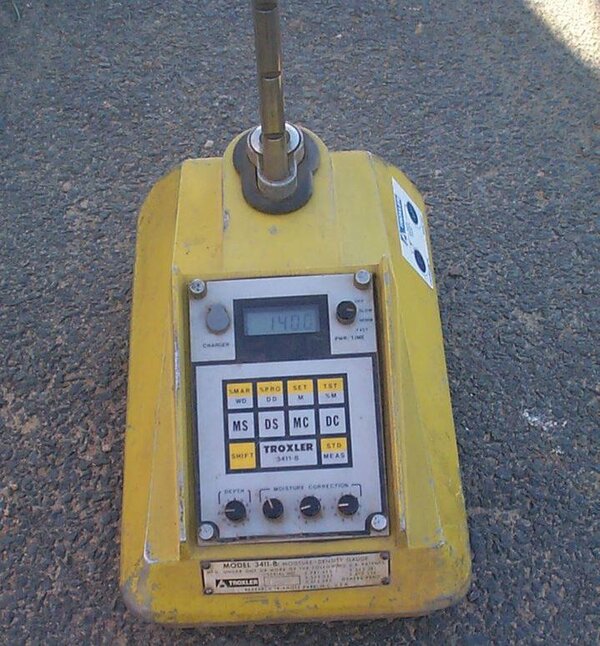What to Know?
Determine that the soil being tested is from the same source and soil type for which the proctor test was performed.
For each soil type specific compaction methods are required to achieve the required compaction.
Cohesive – Static Sheepsfoot
Granular – Vibratory Smooth Drum
Most specifications will require that the moisture content be maintained at ±2% of optimum to achieve its maximum density.
Verify that the thickness of the material placed does not exceed the compaction ability of the equipment used.

Radiation Safety
The Nuclear Density Gauge has three radioactive sources located within the unit.
Cesium, Radium and Amercurium.
The sources are encapsulated in lead shielding the Radioactive waves.
Protecting Yourself from Radiation Exposure
Limit the time of gauge use therefore decreasing the amount of exposure.
Carry the gauge at arms length reducing the exposure to the soft internal organs.
Wear a radiation badge and send it in regularly to monitor the level of exposure.
Never stand directly in front of the gauge when the source is exposed during servicing.
How Does the nuclear density gauge operate in the Field?
Calibrate the gauge to the environment
Input the proctor value
Drive pin in ground to create hole
Place gauge over hole and extend rod
Run test and confirm results
Reporting of Findings
Adequate testing performed to verify that the project specifications have been met.
Accurate recording of locations and elevations tested with the test results.
Overall record of the total quantity of fill material placed and conformance to the required specifications.
Presentation is attached below.
Determine that the soil being tested is from the same source and soil type for which the proctor test was performed.
For each soil type specific compaction methods are required to achieve the required compaction.
Cohesive – Static Sheepsfoot
Granular – Vibratory Smooth Drum
Most specifications will require that the moisture content be maintained at ±2% of optimum to achieve its maximum density.
Verify that the thickness of the material placed does not exceed the compaction ability of the equipment used.

Radiation Safety
The Nuclear Density Gauge has three radioactive sources located within the unit.
Cesium, Radium and Amercurium.
The sources are encapsulated in lead shielding the Radioactive waves.
Protecting Yourself from Radiation Exposure
Limit the time of gauge use therefore decreasing the amount of exposure.
Carry the gauge at arms length reducing the exposure to the soft internal organs.
Wear a radiation badge and send it in regularly to monitor the level of exposure.
Never stand directly in front of the gauge when the source is exposed during servicing.
How Does the nuclear density gauge operate in the Field?
Calibrate the gauge to the environment
Input the proctor value
Drive pin in ground to create hole
Place gauge over hole and extend rod
Run test and confirm results
Reporting of Findings
Adequate testing performed to verify that the project specifications have been met.
Accurate recording of locations and elevations tested with the test results.
Overall record of the total quantity of fill material placed and conformance to the required specifications.
Presentation is attached below.
